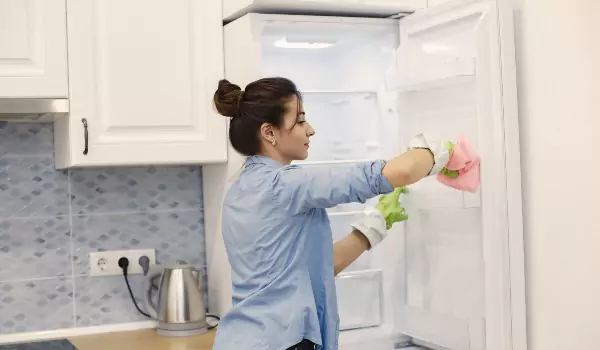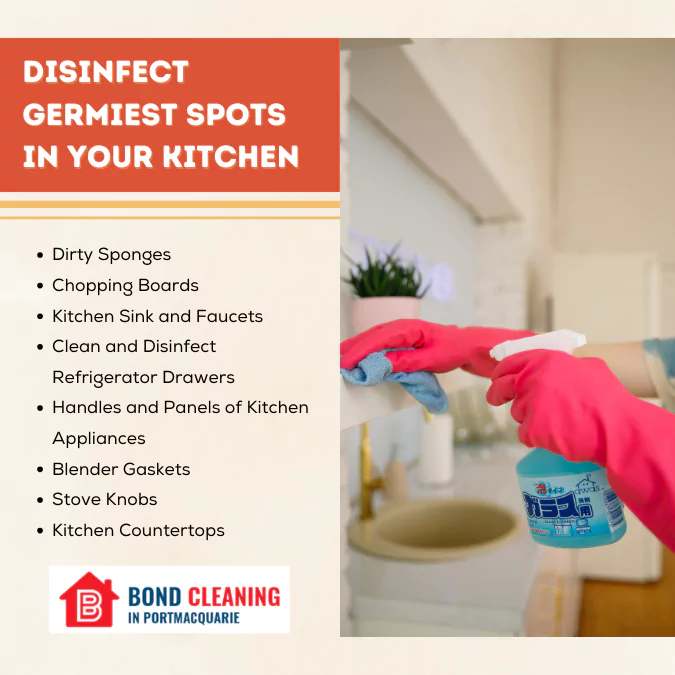Hidden Dangers Clean These 10 Germiest Things in Your Kitchen
A kitchen is undeniably a haven for lethal microbes, like E.coli, Campylobacter, salmonella, etc. Stained countertops, filthy appliances, clogged drains, and grease laden wooden cabinets are magnets for disease causing germs.
Some microbiologists have also made a shocking revelation that certain areas in a kitchen can be dirtier than the toilet seat if not cleaned regularly. This can even lead to various health hazards, such as food poisoning, gastrointestinal infections, respiratory issues and chronic allergic reactions.
Therefore, it becomes imperative to take kitchen cleaning and sanitisation more seriously to create a healthy and hygienic indoor environment. Here is a comprehensive guide to help you address the 10 germiest areas in your kitchen and effective elimination techniques to achieve the desired results. Ensure you maintain a regular cleaning session and use eco friendly products to keep lurking germs at bay.
Hide
Show
1. Dirty Sponges: The Most Lethal Thing in Your Kitchen
The sponge you’re using to clean dishes and countertops is the breeding ground for germs and bacteria. A dirty and damp sponge harbours 45 billion microbes per sq centimetre, commonly E. coli and fecal bacteria. These germs thrive in moist environments, and a damp sponge is the perfect place. It can even lead to cross contamination if you use the same sponge across surfaces.
The Solution: Disinfect your sponge in the microwave for 20 or 30 seconds with vinegar. Washing them in hot water once a week can also be ideal. However, professional bond cleaning Port Macquarie experts suggest replacing dirty sponges with a new one every three weeks.
2. Chopping Boards: Thriving Hidden Microbes
Did you know that the average chopping board is 200 times more contaminated than a toilet seat? Using the same board for vegetables and raw meats can make things worse. Plus, it is one of the most overlooked things in the kitchen. Chopping usually creates tiny grooves where moisture, food crumbs and bacteria can harbour, causing infestation. This can lead to serious illnesses like diarrhea and stomach infections.
So, first things first, use separate boards for chopping raw meat and vegetables or fruits. When it comes to cleaning, soak it in a mixture of vinegar and hot water after each use. To kill lurking germs, scrub the board with a mixture of lemon and baking soda. Gently scrub every inch and rinse in running water.
Tip: Use green cleaning products to save money. Vinegar, baking soda, and lemon are affordable and effective for cleaning.
3. Kitchen Sink and Faucets
Leaving piles of dirty dishes in the sink breeds harmful bacteria, which thrive on leftover food and grime. This can cause foodborne diseases. It is good to wash your dishes before going to bed. To disinfect sinks, apply a thick paste of baking soda, including nooks and crannies, and leave it for a few minutes. Scrub the surface with a brush and rinse it. For faucets, use a rubbing alcohol solution .Do it regularly to prevent germs infestation.
4. Clean and Disinfect Refrigerator Drawers

The fridge drawers where to stock meat and vegetables can harbour lethal germs. The unwrapped fruits and dripping raw meat juices can breed disease causing microbes such as listeria, mould and yeast. Thus, deep clean drawers using proper tools and products. Soaking them in hot, soapy water or spraying white vinegar can help deliver spotless results.
5. Handles and Panels of Kitchen Appliances
These are among the filthiest spots in your kitchen because they are frequently touched during cooking, often with greasy and damp hands. Since grease attracts germs quickly, ensure you daily wipe it clean using the right disinfectant. Use a solution of vinegar, tea tree oil and water to disinfect door handles and control panels of your stainless steel appliances.
If you are at the end of your tenancy, book experts for a detailed bond cleaning Port Macquarie and secure your bond money.
6. Blender Gaskets
Filthy blender gaskets can breed E. coli and salmonella. The worst part is that these hidden creatures are difficult to eliminate, as they lurk on the gasket that is under the blade. You’ll need to take your machine apart after every use and deep clean it with hot, soapy water. Gently scrub with baking soda to achieve spotless results.
Tip: Read the manual to avoid costly repairs.
7. Stove Knobs
Believe it or not! Stove knobs are the germiest spots in your kitchen. It is often laden with grease, gunk, and dirt, making it a perfect environment for germ infestation. Here is a step by step cleaning process:
- Remove the knobs and submerge in warm, soapy water. Leave it for 10 minutes
- Add a cup of white vinegar to boost cleaning results
- Scrub with an old toothbrush to tackle grease
- Prepare a thick paste of baking soda and disinfect with a brush
- Wipe the area clean
- Dry completely
8. Kitchen Countertops
It is often exposed to food spills, raw meat juices, oil splatters and dirty hands. Damp areas is a breeding ground for bacteria like Listeria and Salmonella.
Make sure you wipe down your counters after preparing your meals. Use baking soda to clean and disinfect the natural stone surfaces.
9. Knife Block
Have you ever cleaned knife blocks? These are often laden with mould and other harmful bacteria due to dirt and moisture buildup. It is good to submerge the blocks in a white vinegar solution and brush them with an old toothbrush. Rinse and turn it upside down to dry.
If you want to prepare the entire property, book bond cleaning Port Macquarie professionals and impress your fussy landlord. They clean every nook and cranny to deliver high quality results.
10. Trash Can
The kitchen dustbin needs your attention to keep germs at bay. It is good to set a cleaning routine and empty your bin. After that, pour white vinegar and warm water solution and leave it for a few minutes. Empty and rinse it again. Next, sprinkle a generous amount of baking soda and wipe it before reusing.
Disinfect Germiest Spots in Your Kitchen

Wrapping Up
These are the potential areas that can be breeding grounds for lethal germs and bacteria in your kitchen. Ensure you follow the correct methods and use effective products to clean and disinfect these items, creating a harmonious and hygienic cooking station in your home.

